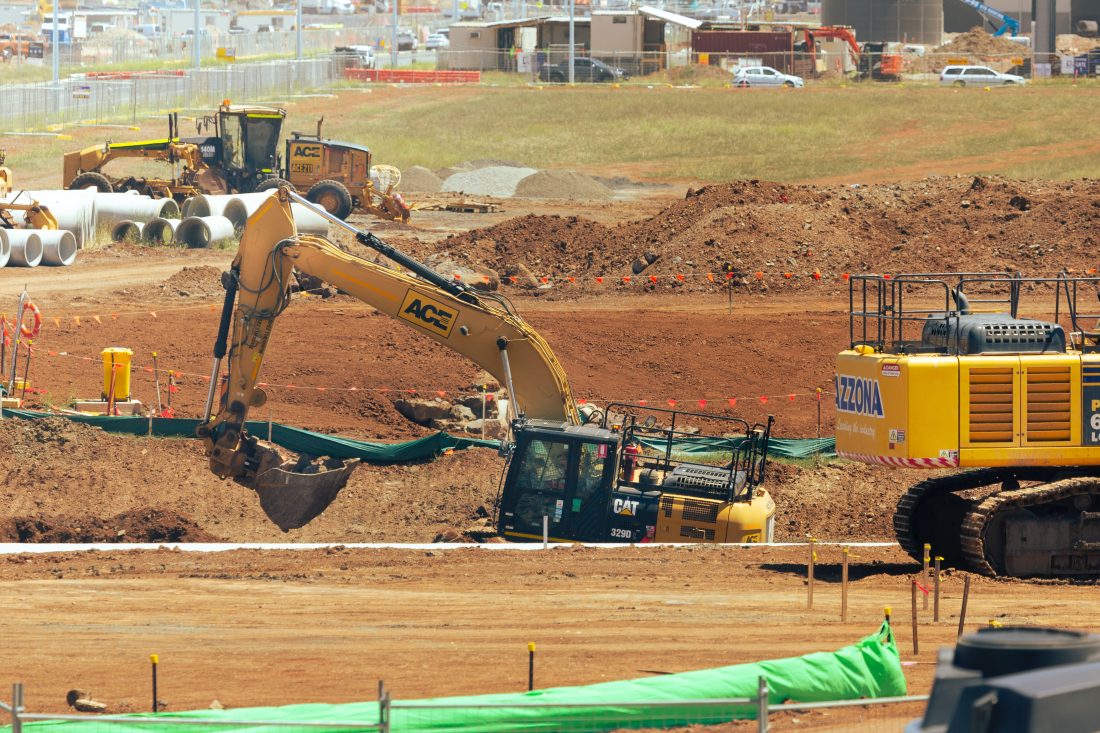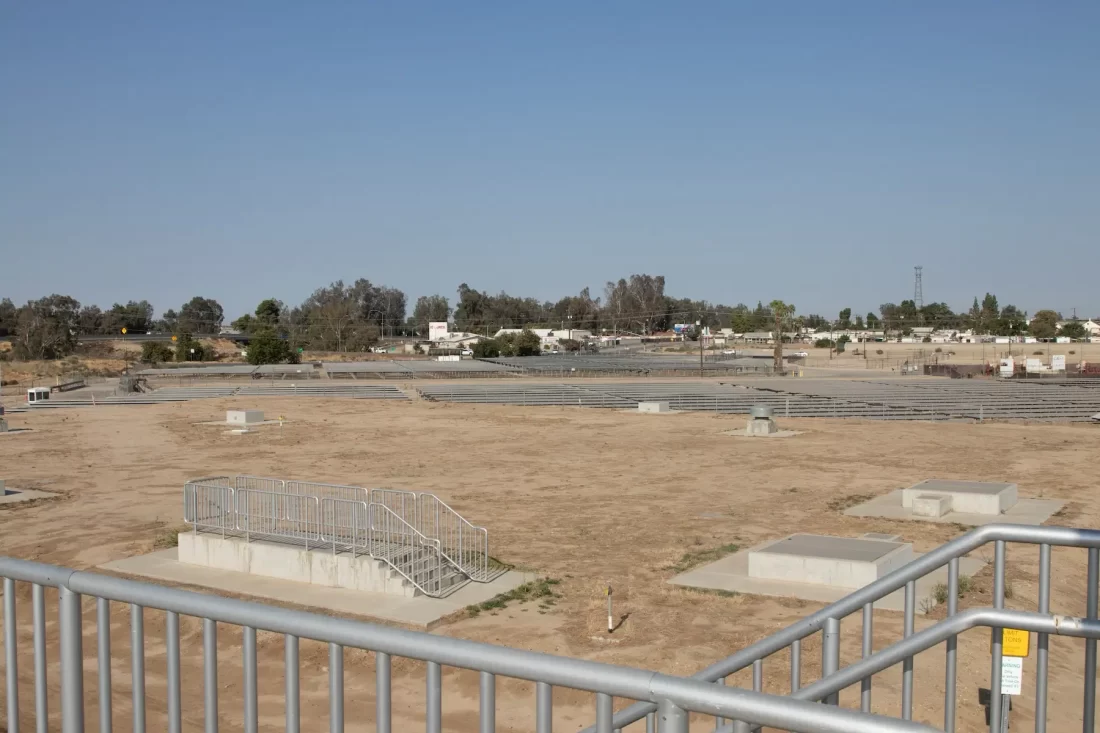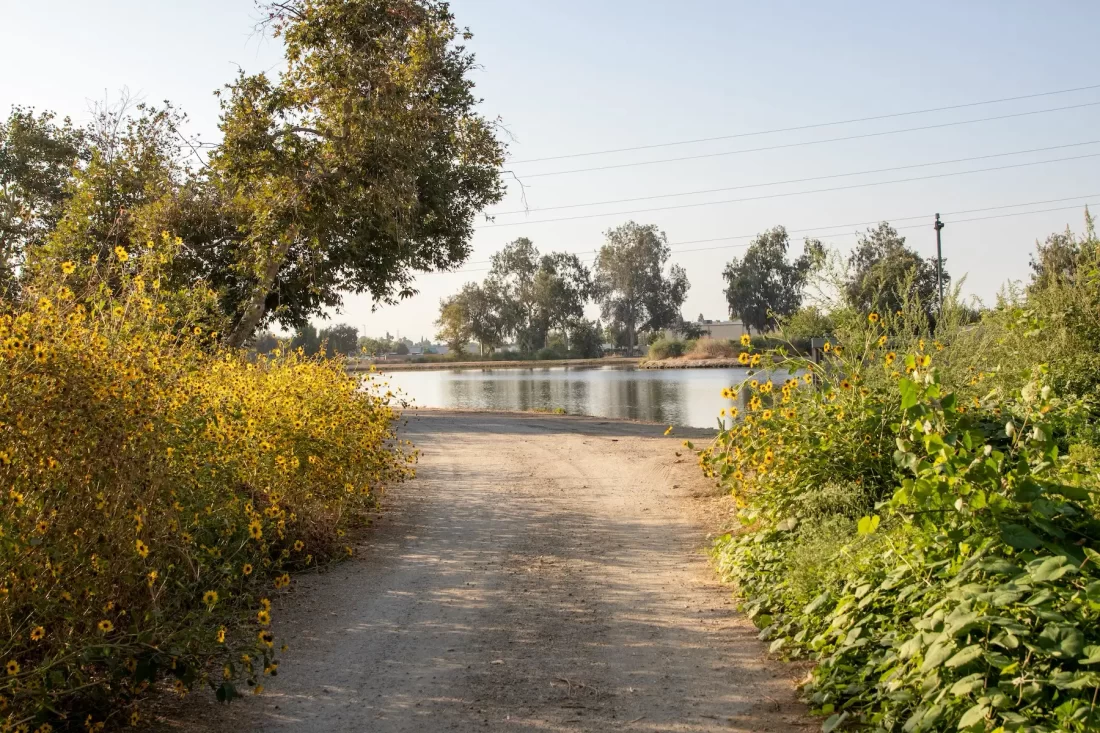Projects
Current Projects
Cross Valley Canal Expansion Project
Project Overview
In an effort to increase flexibility of water deliveries to residents and farmers, the Cross Valley Canal (CVC) was constructed in 1975 to move State Water Project (SWP) water from the California Aqueduct to urban Bakersfield. The Kern County Water Agency (Agency) contracted with various water districts (CVC Participants) for the construction and operation of the CVC. The first 17 miles of its 21.5-mile length are concrete-lined to minimize water losses, while the remaining section is unlined to facilitate ongoing percolation to the aquifer (recharge). The CVC Expansion Project began in 2005 to expand the ability to accept imported water. The expansion will increase the CVC’s capacity and water supply reliability by approximately 54 percent, allowing 1,422 cubic-feet-per-second of flow. This represents incredible infrastructure, with the CVC connecting to the California Aqueduct, local banking projects and districts, the Agency’s Henry C. Garnett Water Purification Plant and the Friant-Kern Canal. The delivered water is then used for agricultural, municipal and water recharge purposes. The Expansion was completed in 2012.

Completed Projects
Treated Water Capacity Expansion Project
Project Overview:
In 1971, the Kern County Water Agency (Agency) Board of Directors formed Improvement District No. 4 (ID4) to provide a supplemental water supply for the urban Bakersfield area through the importation of water from the State Water Project. As a participant in the Cross Valley Canal, ID4 utilizes the 21.5-mile facility to move water into ID4 and to adjacent groundwater banking areas. Water delivered to ID4 is either directly recharged to replenish the underlying groundwater aquifer or delivered to the Henry C. Garnett Water Purification Plant where it is treated and then delivered to retail water purveyors. These retail purveyors include the California Water Service Company, the City of Bakersfield, East Niles Community Services District, and North of the River Municipal Water District which wholesales water to Oildale Mutual Water Company. In response to declining groundwater quality and to meet additional demands in the growing Bakersfield area, the Agency began developing the Treated Water Capacity Expansion Project (TWCEP) in 2001 for the expansion of existing facilities and construction of new pump stations and pipelines to deliver treated water to the north, northwest and east portions of metropolitan Bakersfield. The project included construction of a large-scale power project and electrical substation. The TWCEP was completed in 2011 and provides a safe and affordable water supply to tens of thousands of homes and businesses in the metropolitan Bakersfield area.
Benefits of the Project
- Increased Drinking Water Quality
- Increased Drinking Water Reliability
- Increased Drinking Water Supply
- Updated Infrastructure
- Increased water treatment capacity and modernization of the Henry C. Garnett Water Purification Plant and related distribution facilities.
- Cost Savings
- Offset rising energy costs through solar and electrical substation facilities.
- Reduced long-term capital costs by building all Expansion Project components together.
- Environmental Benefits
- Use of renewable energy through the solar project.


Other ID4 Water Management Efforts
Water users within ID4 benefit from ID4’s participation in the Cross Valley Canal (CVC) and the CVC Expansion Project that increased CVC capacity to transport water by about 54 percent. The CVC serves as the primary conduit for bringing water from the California Aqueduct to the Henry C. Garnett Water Purification Plant and to recharge ID4’s groundwater. ID4 also participates in groundwater banking programs to enhance the reliability of the water supply by storing water to be used during dry hydrologic conditions.
Brochure
Media – English
- Television Commercial 1: Quicktime – Windows Media
- Television Commercial 2: Quicktime – Windows Media
- Radio Spot 1
- Radio Spot 2
Media – Spanish
- Television Commercial 1: Quicktime – Windows Media
- Television Commercial 2: Quicktime – Windows Media
- Radio Spot 1
- Radio Spot 2
Henry C. Garnett Water Purification Plant Expansion Project
The Henry C. Garnett Water Purification Plant is a conventional water treatment facility that was expanded from a peaking capacity of 38 million-gallons-per-day (mgd) to 72 mgd with the contracted annual production increasing from 25,000 acre-feet (af) to 53,000 af during a 30-year ramp-up period. This project was completed in 2011.
East Feeder Expansion Project
The East Feeder Expansion Project included the expansion of the East Feeder Facility, the construction of the Oswell Bypass Project, modifications to the 23 Corner Tank Facility and relocation of the State Route 178 pipeline crossing, which results in expanded pumping capacity and modified water transmission facilities for the existing East Feeder Facility. This project was completed in 2011.
North Feeder Expansion Project
The North Feeder Expansion Project includes the installation of a parallel 27-inch diameter pipeline and construction of a 21-million-gallons-per-day pump station, which provides expanded pumping and conveyance capacity for the existing North Feeder Facility. This project was completed in 2011.
Henry C. Garnett Water Purification Plant Electrical Service Entrance Upgrade Project
The expansion of the water purification and pumping facilities at the Henry C. Garnett Water Purification Plant increased the electrical load at the site. Improvement District No. 4 (ID4) replaced the Pacific Gas and Electric Company electrical substation with an ID4-owned 14-megawatt substation and medium voltage switchgear to provide electrical power for operations. This results in lower energy rates, saving approximately $200,000 per year. This project was completed in 2009.
Improvement District No. 4 Solar Photovoltaic Project
Improvement District No. 4 (ID4) constructed a 1-megawatt alternating current, solar photovoltaic power system, which offsets increasing unit rate power costs for the distribution of drinking water to ID4 retail purveyors. This project was completed in 2009.
Northwest Feeder Project
The Northwest Feeder Project included the construction of the Northwest Pump Station and Pipeline, as well as interties constructed by the City of Bakersfield and California Water Service Company, and allows for the delivery of 32 million gallons per day of treated water to the northwest portion of metropolitan Bakersfield. This project was completed in 2007.
Rosedale-Rio Bravo Joint Use Groundwater Recovery Program
The Rosedale-Rio Bravo Water Storage District (RRBWSD)/Improvement District No. 4 (RRBWSD/ID4) Joint Use Groundwater Recovery Program includes additional capacity as follows: 45 cubic-feet-per-second (cfs) of water well recovery capacity, 60 cfs of transmission pipeline capacity and 60 cfs of Cross Valley Canal (CVC) turn-in capacity. RRBWSD paid for the construction of wells, pipelines and turn-in facilities to the CVC, and ID4 operates and maintains the wells as part of its expanded Allen Road Well Field. This project was completed in 2007.
Bulk Sodium Hypochlorite Conversion Project
The Bulk Sodium Hypochlorite Conversion Project replaced the Henry C. Garnett Water Purification Plant’s existing gaseous chlorine disinfection system to improve plant safety and to meet current code requirements. This project was completed in 2006.
Ongoing Projects
Monitoring Well Project
Improvement District No. 4 (ID4) is currently in the process of developing monitoring well sites for ID4’s groundwater monitoring program. Historically, ID4 staff has used a number of wells to monitor groundwater levels within its boundaries. These wells have been a combination of water production wells, standby wells and monitoring wells. Over the past several years, a number of wells used for monitoring purposes have been destroyed by landowners, so the land occupied by the wells could be used for other purposes. This activity has reduced the number of wells ID4 staff can use to monitor groundwater levels. For this reason, staff has begun the process of contacting landowners of existing wells in order to preserve them for monitoring purposes before they are destroyed. This project is ongoing.

